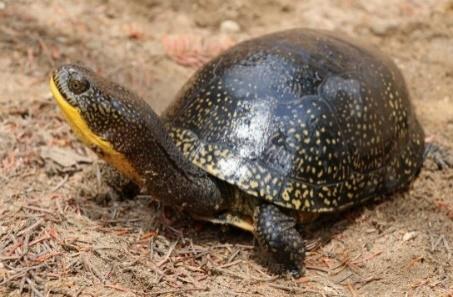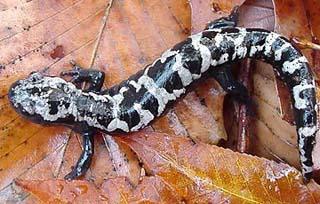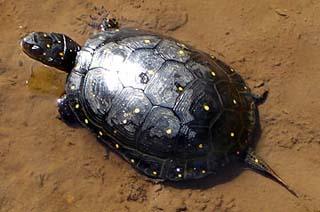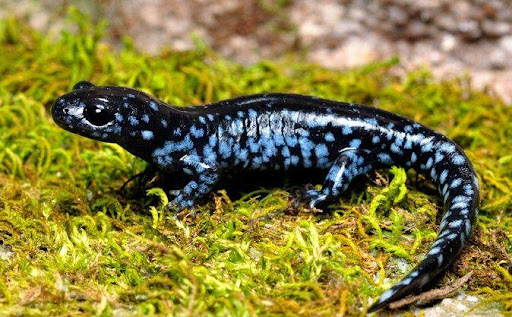These fascinating and fragile pools that appear seasonally in the spring (vernal) or autumn (autumnal) provide specialized breeding habitat for many species. They are threatened by human encroachment and changes in weather patterns. Vernal pools deserve protection, but the features which define them also conceal them:
- disappear seasonally;
- may be vernal or autumnal;
- vary in depth, size and include a large surrounding environment;
exist almost anywhere; - are hidden from above and below.
Think about their value as a breeding habitat, the fragility of their ecology and the lives of the creatures they support. Don’t they, as other wetlands, deserve our protection? But, we have to find them first.
Appearing annually, a vernal pool is a special, temporary wetland that does not support fish life but provides essential breeding habitat for certain plants, reptiles, amphibians, and wildlife such as:
- Sphagnum moss, sedges, ferns, and shrubs (high-bush blueberry or buttonbush)
- Wood frogs, spotted salamanders, fairy shrimp, turtles, fingernail clams, caddis flies.
Click here for a recording of frogs calling in a vernal pool on Parsonage Road.
Endangered or threatened species found in NH vernal pools (little research is available about Cornish pools):
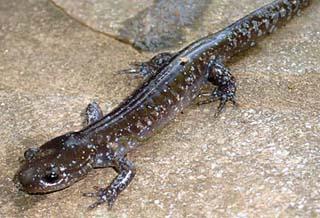
During breeding, amphibians spend a short, critical time in the pools themselves, but about 11 months in the surrounding woodlands within approximately 600 yards of the pool. So it is not just the pools which need protection but the surrounding areas as well.
The pools and surrounding areas are threatened by the effects of climate change on the weather, the water table, increased pollution, removal of the forest canopy, and the intentional or unintentional human incursion. As these threats become more common, it is critical to focus efforts on locating and protecting the areas and the species that may inhabit them.
But, we have to find the pools first – and the features below make that difficult:
- located in upland, bottomland, or associated with floodplain wetlands;
- surrounded by forest, field, shrub, swamp, marsh, or gravel pit..;
- size (up to several acres), depth (as shallow as a few inches) and duration vary with snow and rainfall conditions;
- can be vernal (spring) or autumnal;
- are concealed by forest canopy and understory growth.
Contact New Hampshire Fish and game for help finding and mapping vernal pools on your property, (603) 271 2461 (NH Fish & Game Help Mapping Pools).
Once found, some important considerations for protecting vernal pools:
- Vernal pools may qualify for wetlands protection, but you have to locate and mark them first;
- Core habitat extends from the breeding habitat as much as 950’ from the pool edge;
- Perimeters should be marked when pools contain water to allow identification during the dry and winter seasons;
- Locate openings such as landings, main skid trails, roads, wildlife food plots far from the pools and avoid locating permanent non-forest openings directly between two adjacent pools;
- Avoid adding woody material to vernal pools or removing trees with crowns overtopping the pools to maintain water temperature and nutrient inputs.
- Map your vernal pools any time you have a survey done, such as planning a subdivision or a sale.
There are many good resources for further information, but the best planning would involve discovering and mapping these rich, bio-diverse habitats in Cornish woods and forests.
Source Links For Further Information:

